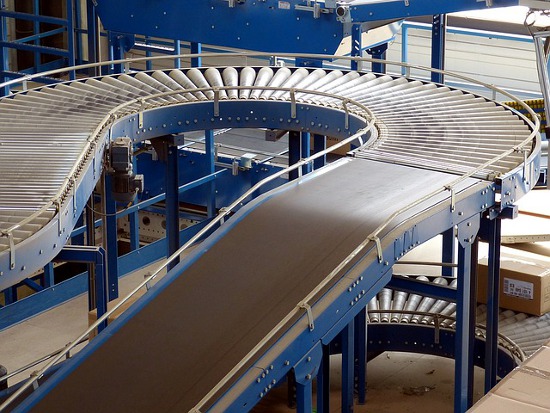The use of conveyor belts is quite versatile, from large warehouses, all the way to the mining industry. That’s why there are different types of conveyor belts, each built to match a specific need. In most cases, conveyors differ one from the other based on the cargo they are designed to transport.


For instance, a mining operation requires large, sturdy conveyors, white the storage and shipping industry is all about speed and precision. Therefore, we present you with a short guide on how to choose which conveyor type your business specifically requires.
Taking the operating environment into consideration
Looking at different types of conveyors, business owners check various factors but they often forget the most important: the environment the conveyer belt will operate it. For one, it is not all the same if the conveyor will be installed indoors or outdoors. A conveyor belt intended for the mining industry should have protection against rain and snow, as well as the ability to withstand subzero temperatures, as prospectors often push their equipment to the limit.
Indoor conveyors have their fair share of wear and tear too. If operating in a manufacturing plant or a warehouse, all sorts of substances, like oil or grease, can leak into the conveyor’s mechanism, causing various malfunctions. Furthermore, if a viscous fluid ends up on the rubber belt itself, it can cause objects to slip from it.
Do you need guide rails?
Again, based on the type of goods you are transporting, the conveyor belt may or may not require the use of guide rails. These rails are integrated into many types of conveyors that are used in the shipping industry so courier companies cannot do without them. They help shift packages and get them in the correct bin.
If you choose to install a conveyor belt system with integrated guide rails, then pay attention to the shape and the positioning of the rails in curves. Most damage to fragile goods caused by the conveyors occurs when they hit an unpadded rail while turning. The design of the conveyor belt system plays a huge role in this case as the material the rails are made from should correspond with the packages it will convey.
It’s all about product specifications
You might have concluded by now that the main criterion when it comes to selecting the right conveyor type is the product you are transporting, i.e. its specifications. The dimension of your products, its weight, and the production rate will influence the conveyor type you’ll ultimately get.
For instance, conveyor products and solutions for the mining industry should have a mild incline and the belt itself should be wide with a slight inclination inwards. Furthermore, the support columns should be made from solid steel as these types of conveyors transport heavy loads across long distances.
Finally, automation is an important aspect of conveyor belts that warehouses use. In these environments, the conveyor can be programmed to deliver packages from their storage point, i.e. a shelf, and take it all the way to the delivery van. What is more, conveyor belts are used in warehouses and factories to increase the ergonomics.
As you have seen from the points made in our text, you should first be fully conscious of the environment you’ll put the conveyor in before you are ready to settle on a specific type. Furthermore, know the traits of the products you’ll be sending up and down the conveyor, so you’ll know which size and width you need and are guide rails necessary as well. Once you’ve resolved all of the listed issues, the right conveyor type will basically choose itself as you head to the manufacturer to finalize the purchase.









